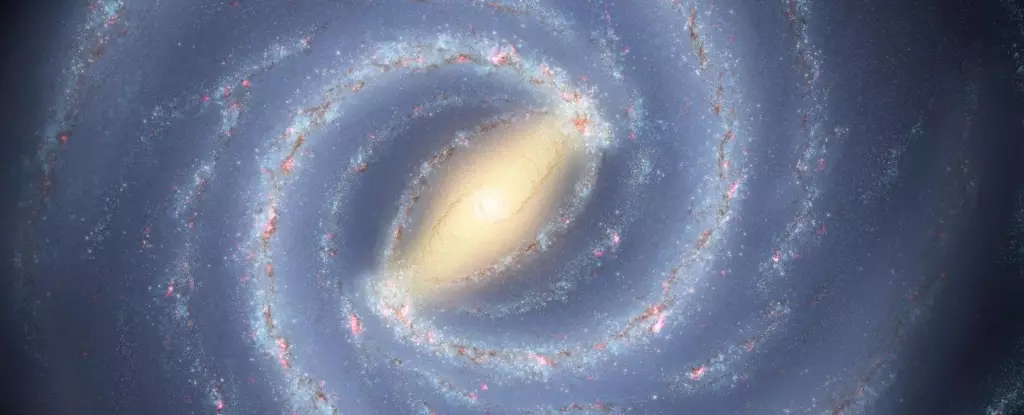The Milky Way serves as a focal point in astronomical research, playing a crucial role in our understanding of the formation and evolution of galaxies. As we reside within this grand spiral, it affords scientists a unique vantage point from which they can initiate in-depth studies using an array of advanced telescopes. Yet, while the Milky Way provides valuable information, new research highlights its unique position among galaxies, underscoring the importance of comparative studies across similar celestial bodies.
Understanding our galaxy necessitates not only an exploration of its own characteristics but also requires situating it within a broader cosmic context. By examining other galaxies that share similar mass and structural attributes, researchers can uncover the nuances of galaxy formation and evolution. This approach effectively utilizes comparative techniques, enhancing our grasp of cosmic processes that govern star formation, gas dynamics, and the distribution of dark matter.
Researchers leverage extensive astronomical surveys to gather foundational data conducive to this comparative analysis. Notable surveys such as the Sloan Digital Sky Survey (SDSS), the Two Micron All Sky Survey (2MASS), and ESA’s Gaia mission contribute significant findings to this pool of knowledge. Additionally, the Satellites Around Galactic Analogs (SAGA) Survey stands out as a pioneering initiative that extracts and analyzes data from a range of galaxies mirroring the Milky Way. The latest data release from SAGA unveils insights drawn from a sample of 101 galaxies, each shedding light on different aspects of their formation and behavior when contrasted with our own home galaxy.
A central player in the formation of galaxies is dark matter, an elusive entity that comprises an estimated 85% of the universe’s mass. This type of matter does not emit light and is invisible to standard observational techniques. However, its presence is inferred through the gravitational forces it exerts, drawing in normal matter and facilitating galaxy formation. The SAGA Survey has specifically investigated the dynamics of satellite galaxies existing within dark matter haloes surrounding larger galaxies.
Through its exploration, SAGA has identified hundreds of satellite galaxies linked to the Milky Way-mass galaxies. The co-founder of the SAGA Survey, Risa Wechsler, emphasizes the significance of these findings, noting that the Milky Way, while an exceptional laboratory for studying these processes, does not represent the norm across the galactic landscape. By identifying and analyzing these related systems, scientists are unearthing critical differences and unique characteristics that reside within the universe’s intricate fabric.
The findings of the SAGA Survey reveal important variations in the number of satellite galaxies accompanying Milky Way-like systems. It was observed that the total satellite count can significantly fluctuate, ranging from non-existent to as many as 13. Notably, the size of the most massive satellite correlates strongly with the overall abundance of satellites within any given system. Interestingly, a third of the surveyed systems host satellites that rival the mass of the Large Magellanic Cloud, often presenting more satellites than our own Milky Way.
Additionally, the star formation rates (SFRs) within these satellites present intriguing trends. Although satellite galaxies display ongoing star formation activity, proximity to larger host galaxies appears to dampen these rates. With the gravitational pull from the more massive dark matter haloes likely playing a role, researchers are left pondering how these dynamics might lead to a ‘quenching’ effect on star formation. The SAGA Survey’s findings highlight that interactions within these gravitational fields impact the evolutionary trajectories of these smaller satellite systems.
The research team has also initiated inquiries to refine models predicting star formation dynamics and quenching within smaller galaxies. By juxtaposing SAGA’s data against computer simulations, they have developed a framework to explore stellar mass functions, SFRs, and the behaviors of quenching in satellite galaxies. This innovative modeling intends to enhance the understanding of internal feedback mechanisms affecting star formation rates, gas accretion, and dark matter interactions.
The implications of SAGA’s research pave the way for future investigations, particularly spectroscopic surveys that can reveal deeper insights into the mechanics at play in smaller satellite galaxies. In an era where mastering our local cosmic environment can yield broader insights into the universe, the SAGA Survey stands as a peerless venture that has set the stage for new developments in astrophysics.
With ongoing studies, researchers will undoubtedly continue to decipher the intricate relationships between the Milky Way and its galactic brethren, providing a clearer understanding of the evolutionary processes sculpting the cosmos.


Leave a Reply